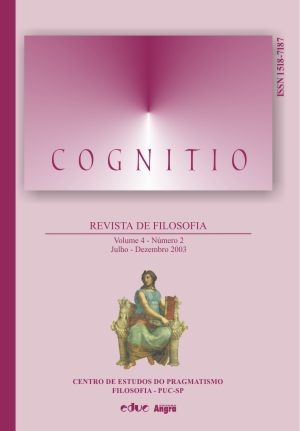Realism After the Linguistic-Pragmatic Turn
Keywords:
Habermas, (anti-)realism, Linguistic-Pragmatic Turn, truth, RortyAbstract
Reading Warheit und Rechtfertigung (Frankfurt: Suhrkamp, 1999) and more specifically what Jürgen Habermas writes in the ”Introduction” to his recent book (not yet published in English), I will try to explain his answer to the epistemological problem of realism: how can we conciliate both the postulate of a world that is independent of our descriptions, a single objective world, and the philosophy of language discovery according to which we have no direct access, non-mediated by language, to ”naked” reality. What I will try to explain then is what made Habermas proceed to a revision that connects the concept of rational acceptability to a pragmatic conception of truth, but without assimilating here “truth” to an “ideal assertibility”. I will simply reconstruct what Habermas had alredy said, in 1996, in his essay on Rorty’s neopragmatism (“Rorty’s pragmatische Wende”, Deutsche Zeitschrift für Philosophie, nº 44, p. 715-741), reprinted in chapter 5 of Warheit und Rechtfertigung (the Englsh version of this essay was published in HABERMAS, On the Pragmatics of Communication [edited by Maeve COOKE], Cambridge, Mass., The MIT Press, p. 343-382). Rorty’s naturalistic strategy, insists here Habermas, “leads to a categorical leveling of distinctions of such a kind that our descriptions lose their sensitivity for differences that, in practice, do make a difference.”Metrics
Metrics Loading ...
Downloads
Published
2013-01-09
How to Cite
Magalhães, T. C. de. (2013). Realism After the Linguistic-Pragmatic Turn. Cognitio: Revista De Filosofia, 4(2), 63–78. Retrieved from https://revistas.pucsp.br/index.php/cognitiofilosofia/article/view/13231
Issue
Section
Cognitio Papers









